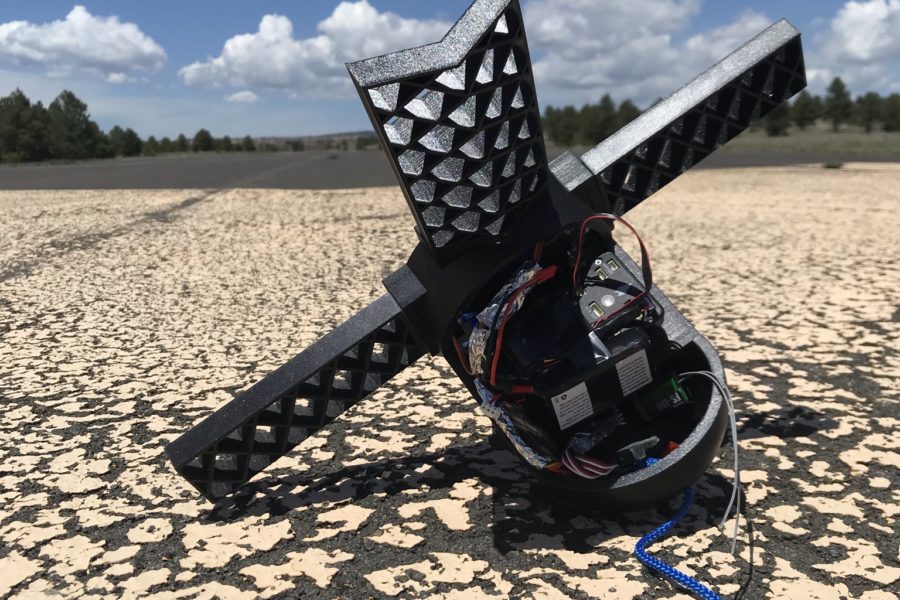The Department of the Air Force’s annual Spark Tank competition takes place March 4, when six teams will take to the stage at the AFA Warfare Symposium in Orlando, Fla. Each team will pitch the most senior leaders in the Air and Space Forces on how their innovations can save money, improve the lives of Airmen and Guardians, and transform the department.
Air Force Magazine is highlighting one team each day from now through March 3. Today, we look at “Aerial Tow Rehookup—Novel Range Extension,” led by Cadet Grant Schlichting of the U.S. Air Force Academy.
Schlichting may be the youngest competitor among the Spark Tank finalists this year, but his idea has its roots deep in Air Force history.
Taking part in the glider program at the Air Force Academy, Schlichting noticed paintings of World War II gliders on the walls. Intrigued, he started doing research into the Air Force’s history with gliders and towing, ranging from D-Day to satellites.
“And I thought, ‘Well, gee, if we’ve done it in the past, why did we stop?’” Schlichting told Air Force Magazine.
Originally, Schlichting’s idea was to tow a battalion of tanks on a glider, but once he worked on it and found that “it’s kind of tough to make a glider that can tow a 200,000 pound tank,” he reshaped the concept, with encouragement from his mentors at USAFA.
The result is ATR—a system whereby drones can latch onto aircraft midflight using only a tow rope and mechanical connection and be towed to their destinations, extending their range. The idea would be especially vital, Schlichting argues, as the Air Force looks to develop autonomous drones to serve as “loyal wingmen” for fighters and bombers and as ISR assets.
Schlichting has been working on ATR for two years now, conducting research at the Academy, filing for a provisional patent, and using conferences and internships to learn more. The initial idea to enter Spark Tank, however, wasn’t his.
“I had a mentor of mine who was an upperclassman that got me interested in aero, he’s out doing great things in the big Air Force,” Schlichting said. “And he said, ‘Hey, you should throw your name in the hat.’ And I was kind of thinking about it. I didn’t really know if I had a chance just being a Cadet. But I said, ‘You know what, what the heck, let’s throw it out there and see if anybody thinks anything of it.’”
Schlichting is just the second Air Force Academy Cadet to be named a Spark Tank finalist—in 2019, Preparatory School Cadet Usama Bamieh reached the finals with a software program designed to help weather forecasters. Knowing Bamieh had made it that far, Schlichting said, encouraged him to enter the competition.
“And hopefully this will be an example for other cadets and other spark cells and people that may be new to the Air Force, that just because you’re new doesn’t mean that you don’t bring up a fresh perspective and a good idea that can help the future fight,” he said of making the finals himself.
For his Spark Tank pitch, Schlichting is asking for $1.2 million to fund a six-month program at the Academy for more research and testing. But regardless of whether his pitch wins or not, Schlichting already has the future path for the idea charted out.
“To continue with the risk reduction for flight tests, we’d like to go to the emerging technologies [Combat Training Squadron], which is at Edwards [Air Force Base, Calif.]. They’re well positioned to look at some autonomous docking and other application characteristics,” Schlichting said. “And then finally doing a manned flight test. So that would be using a C-130 or C-17 that is currently outfitted to do parachute drop tests, only we’d be testing their towing capabilities.
“And then long-long-term, if it still has merit going through all these different stages, I’d like ATR to be a MIL-SPEC, so when new autonomous fighters and loyal wingmen come out, that they can either meet aerial refueling requirements or aerial towing requirements. So that way, I’m trying to get the system to be a methodology for the Air Force, not just for one drone [but] that any drone you can combine to it.”
At the end of the day, though, Schlichting said he doesn’t need to be involved in all of these future plans, something that going through the Spark Tank process taught him.
“I had to take a step back, going through all these rounds, and they’d give me feedback on how the pitch should go, and it was very useful. At first it was hard, because it’s my baby. I’ve been working on this for two years,” Schlichting said. “But once I kind of stepped back and said I’m just shepherding this idea along, this is to help the Air Force, that I was able to really grow.”
That’s not to say that he wants to walk away completely—Schlichting is hoping his first assignment will be to graduate school, where he would be able to serve as “innovation consultant, or the person that’s supposed to shepherd the idea.” After that, he hopes to go to Undergraduate Pilot Training, where he doesn’t anticipate much free time to work on ATR. Still, he wants to be “a reference for the program manager and the group that takes it forward.”

- Maj. Giselle Rieschick, 99th Medical Support Squadron, Nellis Air Force Base, Nev.: “Blood Delivery by UAV”
- Maj. Ryan Sheridan, 10th Air Base Wing, U.S. Air Force Academy: “Custom Facemasks for Fighter Pilots and Beyond”
- Matthew Correia, Air University’s Eaker Center, Maxwell Air Force Base, Ala.: “DAGGER: Developing Airmen and Guardians with Games for Enhanced Readiness”
- Maj. Allen Black, 412th Test Wing, Edwards Air Force Base, Calif.: “Project FoX (Fighter Optimization Experiment)
- Senior Master Sgt. Brent Kenney and Tech Sgt. Matthew Connelly, 52nd Fighter Wing, Spangdahlem Air Base, Germany: ”Project Arcwater”
